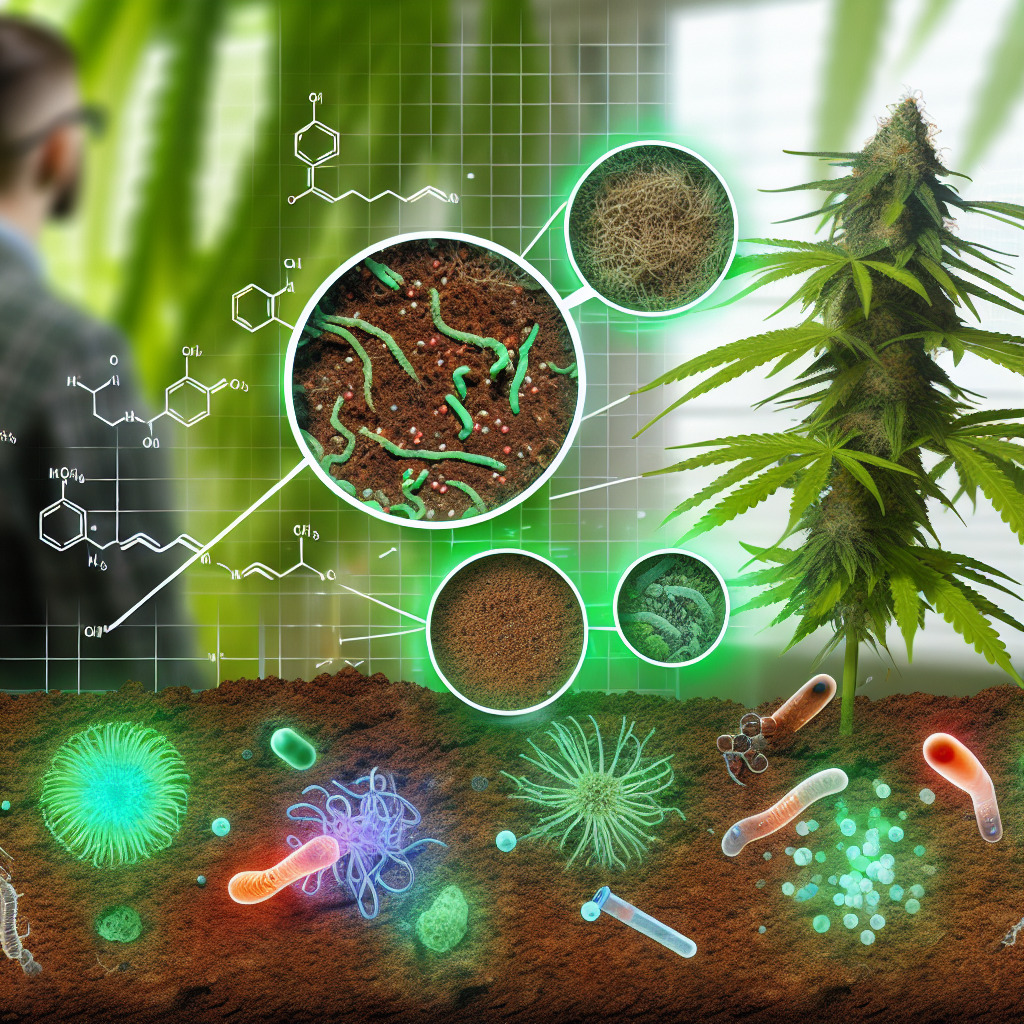Living Soil Cannabis: Microbiome Development for Enhanced Terpene Profiles
Introduction
Cannabis cultivation has evolved significantly, with growers seeking methods that enhance plant health and potency. One of the most promising advancements is the use of living soil, an organic growing medium teeming with beneficial microorganisms. Unlike conventional methods that rely on synthetic fertilizers and sterile soil, living soil fosters a robust microbiome that directly influences plant growth, cannabinoid production, and terpene profiles.
Terpenes are the aromatic compounds responsible for the scents and flavors of cannabis. They contribute to the plant’s entourage effect, enhancing the therapeutic properties of cannabinoids such as THC and CBD. Research has shown that the microbiome of cannabis—composed of bacteria, fungi, and other microorganisms—plays a critical role in terpene biosynthesis.
Living soil operates as a dynamic ecosystem. Beneficial microbes such as mycorrhizal fungi and bacteria enhance nutrient availability by breaking down organic materials. This natural process improves plant metabolism, leading to increased secondary metabolite production, including terpenes. Furthermore, beneficial bacteria can trigger induced systemic resistance (ISR) and systemic acquired resistance (SAR), mechanisms that strengthen plant immunity.
Professional cannabis cultivators are increasingly adopting microbiome-enhanced cultivation methods to improve terpene yield while maintaining organic and sustainable practices. Studies indicate that microbial interactions within living soil do more than just sustain plant health—they actively shape the biochemical pathways responsible for terpene synthesis. With an increasing consumer demand for full-spectrum cannabis products rich in flavor and aroma, exploring microbiome development in living soil is becoming a game-changer for both quality and sustainability.
How Soil Microbes Boost Terpene Production in Cannabis
Scientific research is beginning to uncover the intricate relationship between soil microbiota and terpene production in cannabis. A 2020 study published in Frontiers in Plant Science found that specific bacterial and fungal communities in soil play a pivotal role in modulating terpenoid pathways in plants (Frontiers in Plant Science). Researchers observed that plants grown with a diverse and active soil microbiome had altered terpene compositions, with certain strains of microorganisms increasing specific monoterpene and sesquiterpene levels.
Mycorrhizal fungi, notably Rhizophagus irregularis, have also been linked to increased terpene synthesis in aromatic plants, including cannabis. A study published in the Journal of Agricultural and Food Chemistry demonstrated that inoculating plants with arbuscular mycorrhizal fungi (AMF) enhances volatile organic compound (VOC) emissions, which include various terpenes responsible for aroma and taste (Journal of Agricultural and Food Chemistry). The symbiotic relationship between these fungi and cannabis roots promotes increased phosphorus uptake, a vital element for terpene biosynthesis.
Beneficial Bacteria: The Secret to Enhanced Cannabis Aromatics
Beneficial bacteria such as Bacillus subtilis and Pseudomonas fluorescens have been shown to modulate terpene expression in plants by stimulating induced systemic responses. These microbes produce bioactive compounds that enhance root exudation—altering the rhizosphere environment in ways that boost secondary metabolite synthesis, including terpenes.
A 2019 study in Plant, Cell & Environment highlighted how these bacterial strains drive biochemical pathways that contribute to increased production of β-myrcene and limonene, two key cannabis terpenes associated with relaxation and a citrus aroma (Plant, Cell & Environment).
Furthermore, beneficial bacteria contribute to plant immunization, reducing environmental stressors that would otherwise degrade or suppress terpene production. By reinforcing Induced Systemic Resistance (ISR) and Systemic Acquired Resistance (SAR), these microbes equip cannabis plants with a fortified defense mechanism that enhances overall growth and metabolic efficiency.
Living Soil: A Sustainable Solution to Maximizing Terpenes
From a sustainability perspective, living soil also reduces terpene loss by offering a natural biological balance that prevents environmental stress, which can degrade or suppress aromatic compound production. Stressors such as over-fertilization, pH imbalances, or poor soil structure can diminish terpene expression.
However, a well-maintained soil microbiome enhances nutrient cycling and stabilizes environmental conditions, ensuring more consistent terpene yields with each harvest. Unlike synthetic nutrient regimens, organic soil ecosystems remain self-sustaining, reducing the need for chemical inputs while enhancing natural plant metabolism.
Professional cannabis growers using living soil techniques have reported significant increases in the quality and intensity of cannabis flavors and scents, further validating the scientific findings. As soil scientists and cultivators continue exploring the microbiome-terpene connection, it is becoming evident that microbial diversity is a key determinant in creating premium cannabis with complex terpene profiles.
Conclusion: Feeding the Soil for Full-Spectrum Cannabis
As cannabis research advances, the role of living soil microbiomes in enhancing terpene profiles is becoming increasingly clear. Beneficial microorganisms work symbiotically with plants to optimize nutrient uptake, trigger biochemical pathways, and mitigate environmental stress—all of which contribute to higher terpene concentrations and richer aromatics.
For both commercial cultivators and home growers, investing in microbiome-friendly cultivation techniques leads to more flavorful, high-quality cannabis without the reliance on synthetic additives. Embracing this sustainable approach not only benefits consumers seeking full-spectrum experiences but also supports the long-term health of soil and ecosystems.
By focusing on cultivating the soil rather than just the plant, growers can unlock the full aromatic and therapeutic potential of cannabis—ushering in a new era of organic, terpene-rich cultivation.
Summary: This article explores how living soil and its microbiome can enhance the terpene profiles of cannabis plants. It discusses the role of beneficial microbes, such as mycorrhizal fungi and bacteria, in stimulating terpene biosynthesis and improving plant immunity. The article also highlights the sustainability benefits of living soil, which can reduce terpene loss and ensure more consistent terpene yields. Overall, the article emphasizes the importance of cultivating the soil rather than just the plant to unlock the full aromatic and therapeutic potential of cannabis.
References:
– Frontiers in Plant Science
– Journal of Agricultural and Food Chemistry
– Plant, Cell & Environment




